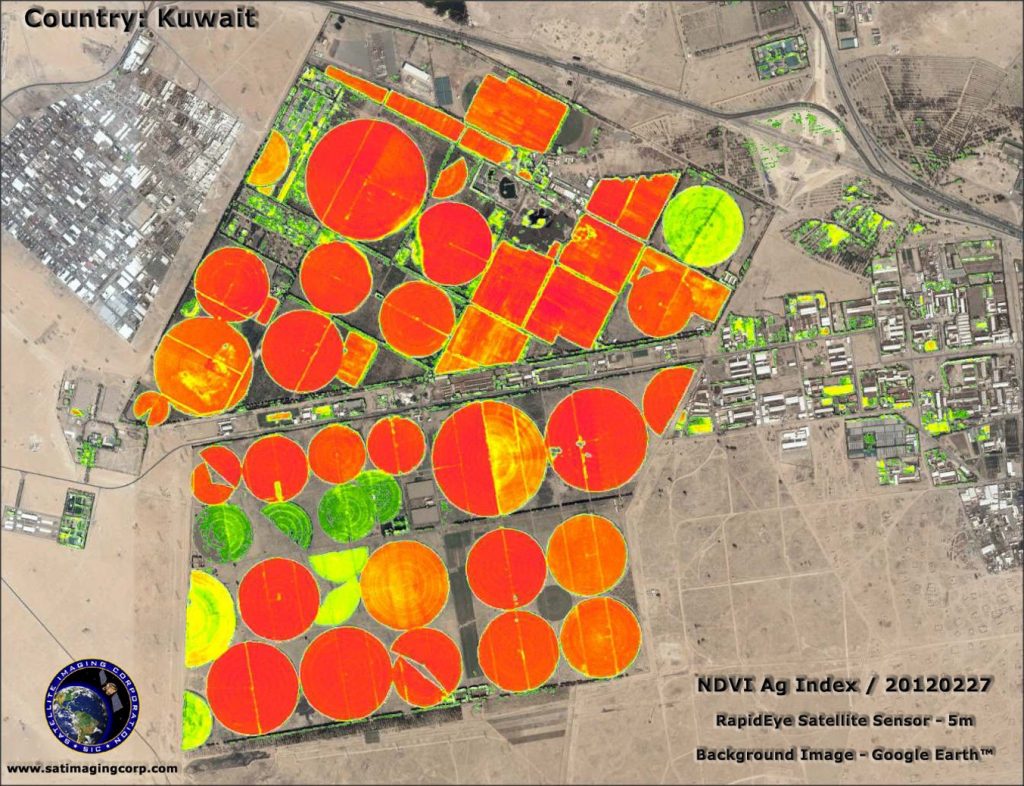Precision farming, also known as satellite farming or smart farming, is a farming management concept aiming optimize crop health and reducing environmental costs of farming through monitoring crop health automatically and systematically by using satellite data. The satellite data has a high degree of accuracy and can help to monitor the changes of agricultural production and activity by providing agricultural maps (The European Space Agency, sd). The figure below shows an example of an agricultural map.

Although satellite technology has been around for decades, precision farming is just around the corner of the mainstream market because neural networks and big data accelerates the usefulness of the satellite data (Jacobs, 2019). The data becomes more interesting for decision making because it can collect, combine and analyze data quickly and accurately. Besides, the precision decision making precision farming also have other benefits.
First, the ability to reduce farming costs by optimizing seed, water and fertilizer usage due to the farmer knowing exactly which field requires attention and cultivation. This also supports the efficiency of the farmer.
Second, farmers can assess and analyze large areas with near-real time data in a short time. This eliminates the need to manually collect data which also has the potential of human error. While satellite data is very precise.
As a result of more precise decision making, reduced farming costs, increased efficiency and short time data analyzation, the future of precision farming is bright. Farmers who are using both satellite data and their agriculture knowledge have and advantage in comparison to farmers who use traditional ways of monitoring and analyzing their fields. Therefore, I predict that precision farming is going to be used on a larger scale. Besides that, I think that precision farming will be encouraged by governments because of the precise monitoring which reduces costs and it improves the field usage and eventually the environmental effects.
Do you think that precision farming is going to be used on a larger scale?
Bibliography
Jacobs, D., 2019. The Future of Satellites in Precision Agriculture. [Online]
Available at: https://www.agribusinessglobal.com/agrochemicals/the-future-of-satellites-in-precision-agriculture/
[Accessed 8 October 2021].
Satellite Imaging Corporation, n.d. Agriculture Mapping Pivot. [Online]
Available at: https://www.satimagingcorp.com/gallery/rapideye/agriculture-mapping-pivot/
[Accessed 8 October 2021].
The European Space Agency, n.d. Land monitoring. [Online]
Available at: https://sentinel.esa.int/web/sentinel/user-guides/sentinel-1-sar/applications/land-monitoring
[Accessed 9 October 2021].

